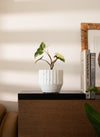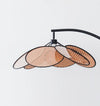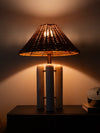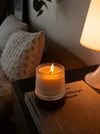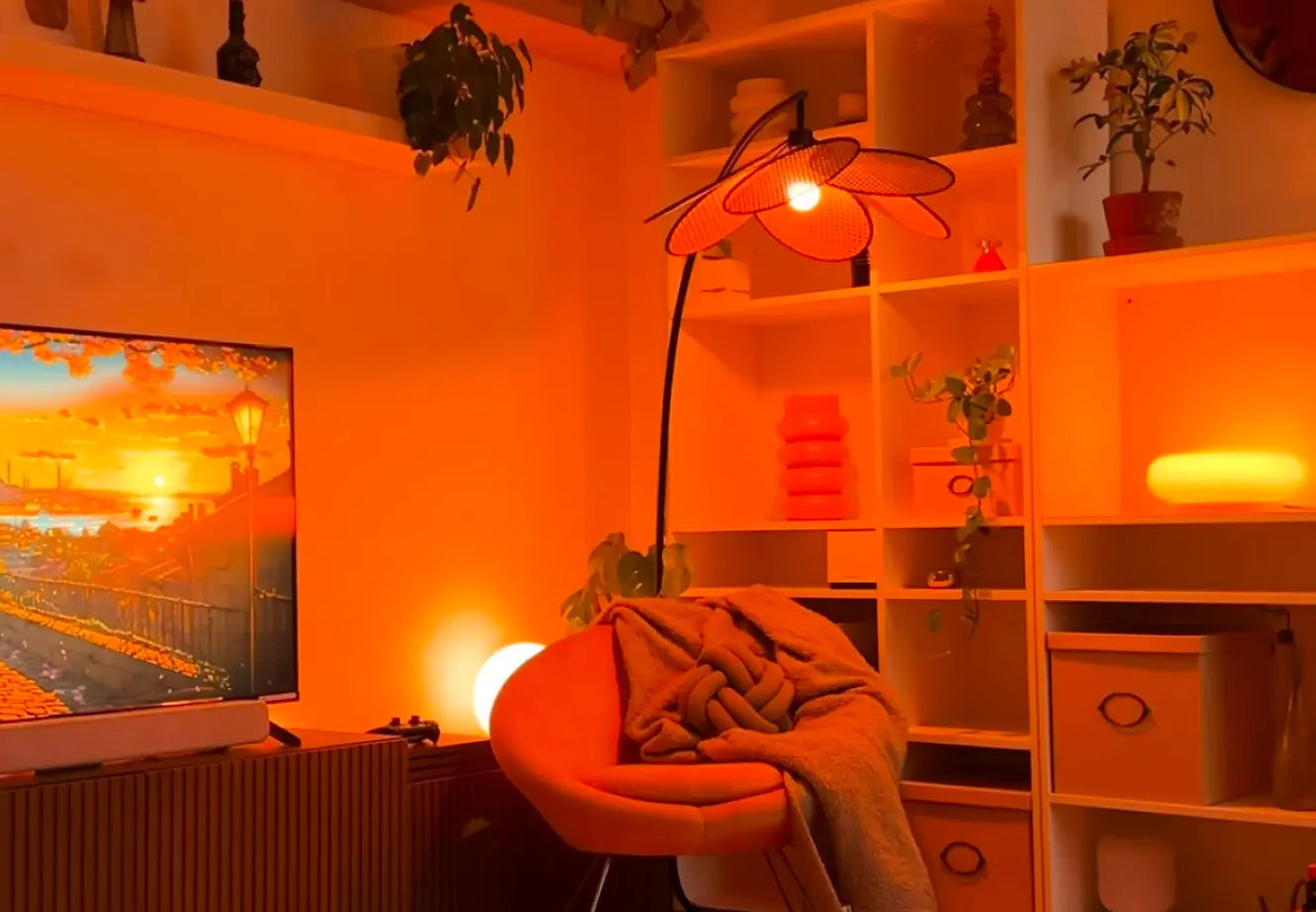Ever feel like your space looks good during the day but somehow falls flat at night? You're not alone, and lighting is usually the reason.
Many homes rely solely on a single ceiling fixture, leaving spaces feeling flat or unbalanced. Great lighting isn’t just about brightness, it’s about layering light to create warmth, depth, and functionality. Whether you're reading on the couch, cooking dinner, or winding down before bed, the right lighting setup can change everything. A thoughtful mix of ambient, task, accent, and decorative lighting sets the perfect mood.
At Gharko, we believe good lighting doesn’t just brighten a room; it brings it to life. From ambient glows to focused beams and little decorative touches that spark joy, light has the power to set the entire mood of your home.
In this guide, we’ll explore the four essential types of lighting and how to use them effectively. From setting the right atmosphere to making your space more practical, this home lighting guide will help you light each room with clarity, purpose, and style.
Let’s take a closer look at how to light a room the right way, using a mix of lighting that truly works for your space.
Why Layered Lighting Matters
Layering light is one of the most effective ways to enhance both the style and function of your space. According to the 5–7 lighting rule, every room should ideally include five to seven lighting points, using a mix of ambient lighting, task lights, accent pieces, and decorative options. This layered approach adds depth, visual balance, and adaptability to different needs. Overhead lights alone can create harsh shadows or a sterile, one-dimensional look. When you thoughtfully select lighting for your home, especially from premium lighting brands in India, you not only enhance usability but also introduce the feel of luxury lighting that beautifully elevates your home decor.
1. General/Ambient Lighting

Ambient lighting, also known as general lighting, is the primary source of illumination in any room. It allows you to move around comfortably, see clearly, and feel oriented within a space. This layer sets the tone of the room and gives it an overall sense of brightness. Think of it as your lighting foundation. It’s usually achieved through ceiling fixtures like chandeliers, flush mounts, fancy hanging lights, recessed lighting, or LED panel lights. These fixtures distribute light evenly, minimizing harsh shadows or uneven glare.
When and Where to Use General/Ambient Lighting
While ambient lighting is essential, it shouldn't work alone. Many homes rely only on overhead lights, which often makes a room feel flat or sterile. On its own, general lighting lacks dimension. That’s why it’s important to layer it with task, accent, and decorative lighting to bring warmth, balance, and functionality. Whether you’re choosing general lighting for your home or looking for overhead lighting ideas, focus on fixtures that complement your space and allow for other layers to shine alongside.
2. Task Lighting

Task lighting is all about functionality. It provides targeted light in areas where you need to focus, whether you're reading, chopping vegetables, working on a laptop, or applying makeup. Its purpose is to reduce eye strain while enhancing precision and comfort for focused tasks. Unlike ambient lighting, which covers the entire room, task lights are directional. Great examples include pendant lights over kitchen counters, under-cabinet lights, adjustable desk lamps, portable lamps, and focused vanity lighting near mirrors.
Best Use Cases and Placement of Task Lighting
Each task zone in your home can benefit from this focused layer. The best task lighting for kitchen setups is under-cabinet lighting, which eliminates dark spots while prepping meals. In bedrooms, a simple bedside reading lamp or compact portable lamp can improve your evening routine. And in workspaces, a good desk lamp adds brightness control and comfort. Just make sure task lighting complements rather than competes with your overall setup. This layer is especially valuable in modern multi-use spaces, where clear zones help support productivity.
Also Read: Less is More, or Less is a Bore? The Truth About Minimalist Design
Also Read: Top Modern Living Room Styling Ideas in 2025 | 15+ Decor Tips
3. Accent/Spot Lighting

Accent lighting adds character, contrast, and focus to a room. It highlights design details, like artwork, feature walls, or decorative shelves, that deserve attention. Unlike ambient and task lighting, which serve broad purposes, accent lighting has a specific aesthetic function. It guides the eye, emphasizing key design elements to create a curated visual narrative. Spotlights, picture lights, wall-mounted fixtures, and track lighting are ideal tools for this layer.
How to Use Accent/Spot Lighting Effectively
When thoughtfully placed, accent lighting adds drama, depth, and refinement. It draws the eye to focal points and makes a space feel more layered and intentional. Whether you want to highlight artwork with lighting or add architectural emphasis, this lighting type helps create that gallery-like finish. Accent lighting works best when it’s subtle, directional, and deliberate, not overly bright or scattered. It’s your chance to curate the visual rhythm of a room and bring design elements to life.
4. Mood/Decorative Lighting
Mood or decorative lighting is the final layer that gives a space its personality. While ambient and task lighting serve practical purposes, this layer focuses on how a room feels. It’s used to evoke a specific atmosphere, such as warm, calm, inviting, or dramatic. Whether you're winding down in the bedroom or entertaining in the living room, mood lighting creates a sense of comfort and intimacy. Popular options include string lights, LED strips, dimmable table lamps, and even flickering candles.
Where Mood/Decorative Lighting Works Best and Why It Matters
Mood lighting is especially effective in areas meant for relaxation or conversation. For instance, decorative lights for the living room, like soft-glow floor lamps or wall sconces, can enhance coziness without overpowering the room. The key is soft, layered light that eliminates harshness while enhancing your decor. Incorporating mood lighting ideas allows you to personalize your space, making it feel more lived-in and expressive. When paired with other layers, this type of ambient home lighting completes the visual and emotional experience of your interiors.
The Art of Layering Light
Achieving a well-lit room is all about balance and depth. Start with ambient lighting as your base. This could be a ceiling fixture, recessed lights, or even natural light from windows. Next, add task lighting in areas where you need focus, like desks, kitchen islands, or reading corners. Use table lamps, under-cabinet lights, or adjustable floor lamps to brighten these zones. Then, bring in accent lighting to highlight architectural features, artwork, or textured walls. Track lights, wall sconces, or picture lights are great for this.
Finally, introduce decorative or mood lighting to create warmth and atmosphere. String lights, candles, or dimmable LED strips help soften the space and make it feel more inviting. A helpful rule to follow is the 5 to 7 lighting point guide, which suggests using five to seven light sources in each room for the right mix of function and style. Bigger rooms may need more lights, while smaller spaces can do well with fewer.
Final Thoughts
Choosing the right lighting for the home is not just about style. It’s about creating comfort, functionality, and mood in every corner.
Lighting isn’t just a finishing touch. It’s the foundation of how your home looks, feels, and functions. By understanding and using the four essential types of lighting: ambient, task, accent, and mood, you can transform any room into a space that’s both beautiful and practical. Layered lighting brings depth, warmth, and clarity, helping your decor shine while also supporting everyday living.
Whether you're updating one corner or rethinking an entire room, start by assessing your current setup and applying the 5-7 lighting point rule. At Gharko, we believe the right lighting doesn’t just brighten a space. It brings it to life with purpose, mood, and meaning. Keep these home lighting tips in mind as you design, and let your lights do more than just glow, they should tell your story.


